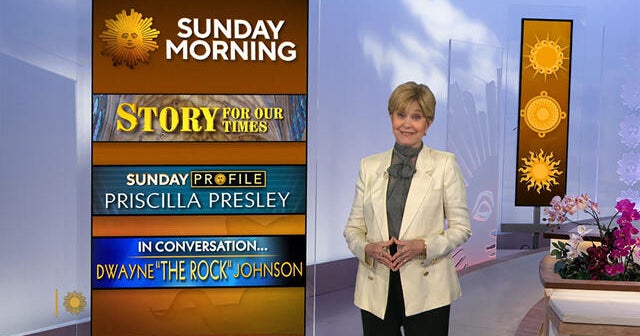Cohn on "job market degrade"

The following is the transcript of the interview with Gary Cohn, IBM vice chairman and former director of the U.S. National Economic Council, that aired on "Face the Nation with Margaret Brennan" on Sept. 21, 2025.
MARGARET BRENNAN: We turn now to a look at the U.S. economy. Gary Cohn was the head of the White House National Economic Council in the first Trump administration. Good morning. Great to have you back.
GARY COHN: Good morning. Thanks for having me.
MARGARET BRENNAN: So, it finally happened. The Federal Reserve lowered interest rates by quarter point, which was expected. So, rates are now in this range of four to four and a quarter percent, lowest level since 2022 the President had said all of this was overdue. What changes now?
GARY COHN: So, look, I think the Fed gave us a lot of important information this last week. As you said, they started down the path of cutting interest rates, going to four to four and a quarter. They also gave us their outlook. So the 17 governors gave us their projections to where they think interest rates are going. So that plot that they put out shows that overall, they believe that interest rates will be cut two more times over the course of this year. Now it's not 100% clear, because the committee is divided. There are about seven members of the committee that do not want another cut this year, but there are 10 members of the committee that want at least two more cuts, and one wants more than two cuts. So that averages out to two cuts this year, which would take the federal funds rate, and it's important to understand the federal funds rate, would take that down to 3.6% for the- for year end. What is also important is the committee was fairly unanimous. I think people were worried about the independence of the Fed. I think the Fed clearly showed themselves to be independent thinkers. They took into account all of the economic data, and they came out with a projections that made sense based on what is going on in the economy today.
MARGARET BRENNAN: So, when rates go lower, money gets cheaper to borrow, essentially. But what does it actually mean?
GARY COHN: Yes and no. So, what the Federal Reserve sets is they set the federal funds rate. That's the overnight rates the banks charge each other to borrow on a secured basis. It has nothing to do where- with where American consumers borrow money. Unfortunately, American consumers borrow money on more of the five year, the seven year, the ten and the thirty year rates, because that's where automobile loans, credit card loans, student loans and mortgages are indexed to those. Interest rates are not determined by the Federal Reserve. They're determined by the open market. Those rates, in fact, after they cut rates earlier this week, went up a little bit that said they are down over the last few months. But those rates do not automatically go down when the Federal Reserve cuts rates. They have more to do with the market, and it's a supply demand situation that determines those rates.
MARGARET BRENNAN: So one of the other things the Fed highlighted here is that the labor market is, quote, "really cooling off." That's what Fed Chair Powell says.
GARY COHN: Yes.
MARGARET BRENNAN: The administration, the Treasury secretary, says, data's bad. They're not seeing that in the jobs numbers. So which is it? What's happening here?
GARY COHN: Well, look, the chairman went out of his way to talk about the dual mandate that the Fed has. The Fed has two requirements that they're supposed to run interest rate policy off of, one is called stable prices, which means 2% inflation. The other is full employment. Full employment is exactly what it sounds like. The Chair said, look, we are going to have to deal with the full employment part of the equation, even though we still have inflation in the system. So, the Federal Reserve itself and the Board of Governors admitted that we are having a declining job market, and we see that, the data over the last three or four months, we have gone from creating well over 100,000 jobs a month to creating less than 50,000 jobs a month. It may be temporary, it may be quite temporary, but the reality is, we have seen the job market degrade. We've also seen companies announce an enormous amount of CapEx and capital expenditures that's going to come into the system. I think it's interesting to take a step back and look at what's going on in the world today. I do think that we have seen companies cut back on the amount of employees they have. You know, when you take companies and you put them in a very difficult environment and you increase the cost of input costs. And inputs have been going up because of tariffs. They've been going up be- other reasons, and they're not able to raise prices to the final consumer. The one lever they can pull to make sure they keep their margins intact is they can cut down on the cost of labor. We came out of a tough situation in COVID where companies were actually afraid about being able to attract and retain people, so they were hoarding labor. So we went from a hoarding labor situation to a situation today where companies are being very aggressive about managing their expenses, and the one expense they can manage is the cost of labor. So they're letting their labor force decline naturally as people retire out of the labor system, and we're seeing that in the data, and I think it's clearly showing up.And the Federal Reserve. Recognize that in this in this week's action,
MARGARET BRENNAN: But when you ask the administration about this point, let's say, well, productivity is going to increase, and there are these technological shifts that are happening. So this data is distorted. Are you-, speaking specifically about tech, or are you saying across the board?
GARY COHN: I'm saying across the board. I mean, we are-- we have seen across the board, and we've seen anecdotal evidence of this. I've seen, and I've heard it directly from corporate CEOs in every business line that they have gone out of their way to cut their- their human capital overhead. So just the data for Q2 is pretty, pretty interesting. Corporate revenues rose about 6.3% for Q2 and corporate profits rose close to 12%. The way you do that, unless you're raising prices of the consumer, and we, and we haven't seen a lot of prices go up to consumer, is you have to cut something out of the expense bucket. The one thing they're cutting is they're cutting labor costs. We've seen it in the U.S. data. We've seen it in the private data, and we've seen it in the anecdotal data.
MARGARET BRENNAN: So, the president signed an executive order on Friday that I want to ask you about, because you have this role at IBM, and some insight into tech. The order is going to impose a $100,000 one-time fee for visas granted to foreign workers, highly skilled workers, H-1B visas. The "Wall Street Journal" is reporting that this caused, like, a panic, because there wasn't a lot of detail, at, like, Apple, and Google, and Microsoft. Did it cause a panic at IBM? I mean, what's going on?
GARY COHN: The- the- I think it caused a panic over the weekend because people weren't sure what was going on with the existing H-1B visas. It's been cleaned up over the weekend, so at- at this point, there's not a panic in the system. Everyone who's got an H-1B visa understands their status and understands how it- how it's- how it's going to work. I actually think this is a good idea. If you understand the H-1B visa program in the United States, historically, it has been a lottery system. So companies have turned in for these visas, and then the U.S. government lotteries them off. If you're now telling a company, look, you need to spend $100,000 to get one of these visas, you're not just going to ask for a- a visa and put a name in the lottery, unless that is a highly skilled person who you need, who you cannot hire in the United States. This visa program is meant for high skilled labor, where you cannot hire that person in the United States. So if that's what it's used for, ultimately we're going to bring high skilled people in the United States. It's going to help grow our economy, and that's good for all of us.
MARGARET BRENNAN: We'll see. Gary Cohn, thank you for your insights, as always. We'll be right back.

















































